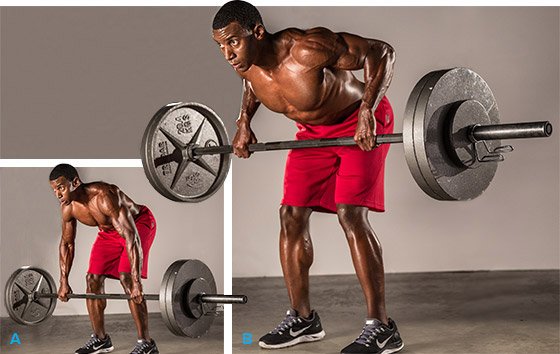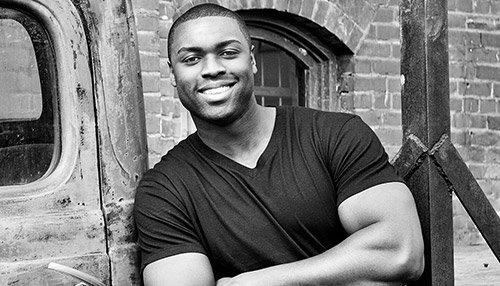Hit the health club on any given Monday, and you might think there's an audition in progress for a new episode of "Maury Povich" about the bench press and the men who love it. After all, what better way could there be to start the week than getting under a loaded barbell and pushing it for all you're worth?
Well, I can think of a couple, but that's for another article. Look, I understand the allure of the bench press. It's the ultimate glamour movement in the gym for men, and it's also a great movement for upper-body size and strength.
The problem is that most people gauge their success only by benching as much weight as possible, and they disregard the crucial setup process and downplay the importance of form to perform the lift correctly. This ends up creating a lot more ex-benchers than strong benchers.
Don't let your favorite lift beat you down. Use these tried and true techniques to skyrocket your bench and blast off to new levels of mass and strength!
Lee Boyce On Proper Bench Press Technique
Watch the video - 4:43
Fix 1 Attack The Back
Upper back exercises are crucial for making the bench press pain-free, stable, and strong. As I mentioned in the video above, the bench press places stress on the shoulder blades and four rotator cuff muscles that originate on the scapula. Having the ability to keep the scapular muscles nice and tight is a key to stability for any pushing movement.
I program my back workouts before my chest workouts whenever I'm isolating specific body parts. This ensures that the back muscles get sore, tight, and are limited in range of motion and flexibility to help fix the shoulder blades on chest day. On a full-body workout, I pull before I push.
Make sure the following exercises are included in your back training day to really build scapular stability and strength:
Fix 2 Dissect Your Lift
If building big bench is important for you, you need to get scientific about it. Break down your lift and figure out where you're weakest, and then focus on turning that weakness into a strength.

Barbell Bench Press
In most cases, a lifter going for a max-effort rep hits a wall or reaches a sticking point around the halfway point coming off the chest. If this is you, it means you lack lockout strength. Luckily, there are many great exercises to help you improve this sticking point.
Lockout Exercises
Floor press
Use a barbell or two dumbbells and lay flat on the floor with the weight in the bench press bottom position. The elbows will be on the floor and the weight around six inches off the chest.
Keep your upper back tight and shoulders retracted. Breathe in, drive the weight up to full-extension at the arm, and keep the legs held together and straight on the ground. Pause at the bottom of each rep. Perform 3 sets of 8 reps.
Pin press
Set up a bench inside a squat rack to create a bench press station. Position the safety pins 4-6 inches above your chest. Lay the bar on the pins and position your body under it. Assume your preferred bench press grip and drive the bar to the top position.
After lockout, lower the bar quickly to the pins. This exercise allows you to focus on max effort. Due to the lack of eccentric control, you'll have more juice in the tank to lift.
Give yourself a couple seconds between reps to get tight and reset your body. Perform this exercise for 3 sets of 3-6 reps.
Chain bench press
Attaching chains to the bench press makes the load heavier as you progress through the concentric portion of a rep. It's a great way to make your triceps do more work during lockout.
In rare circumstances, the sticking point happens at the bottom of the lift, which indicates that chest and shoulder strength is a weak link from a biomechanical perspective. Implementing starting strength exercises can help exponentially with this issue.

Bent over barbell row
Starting Strength Exercises
Pause reps
On the bench press, lower the weight slowly and pause for at least one second on the chest. Remember to stay tight during the rep without slackening your grip or exhaling. You won't be able to lift as much weight as usual with this method, so lower the weight to 80 percent of the normal amount you can lift for reps.
This exercise cuts off the stretch reflex so you can't use momentum at the bottom of the lift. Momentum tricks your chest into thinking that it's performing well, when in reality, it's nothing more than kinetic force that propels the weight out of the hole.
Pause reps are a staple in competitive powerlifting routines everywhere.
One-and-a-half reps
One and a half reps are my favorite way to improve chest activity in a bench press. Ensure that you're set up correctly and lower the bar to your chest like normal.
Press the bar off the chest to the halfway point, where you have a 90-degree angle at the elbow. Lower the bar to the chest again and drive the bar to the top for one rep. Repeat for 3-4 sets of 6-8 reps.
The science behind this madness is simple: For every rep of 1.5s, you're doing 2 reps with just the chest and 1 rep with the triceps at lockout. At the end of a set, your chest will have done twice as much work than your triceps.
Fix 3 Bench More!
Like most physical activities, if you want to improve at something, you must practice it. Building a stronger bench press happens in part from benching frequently. Make like the Bulgarians and up your weekly volume—without going overboard, of course!
Boyce Post-Workout Burnout! Bench Press 225x15
Watch the video - 1:11
Post-workout burnout sets are money when it comes to adding benching volume. At the end of every isolation workout, do a couple quick warm-up bench press sets and then perform a burnout set with 60 percent of your max. Rep it out until failure for one big set.
Here's a video of me doing a post-workout burnout set after a long Olympic lifting workout. My max is around 345 pounds, so 225 pounds is about 65 percent of my max.

